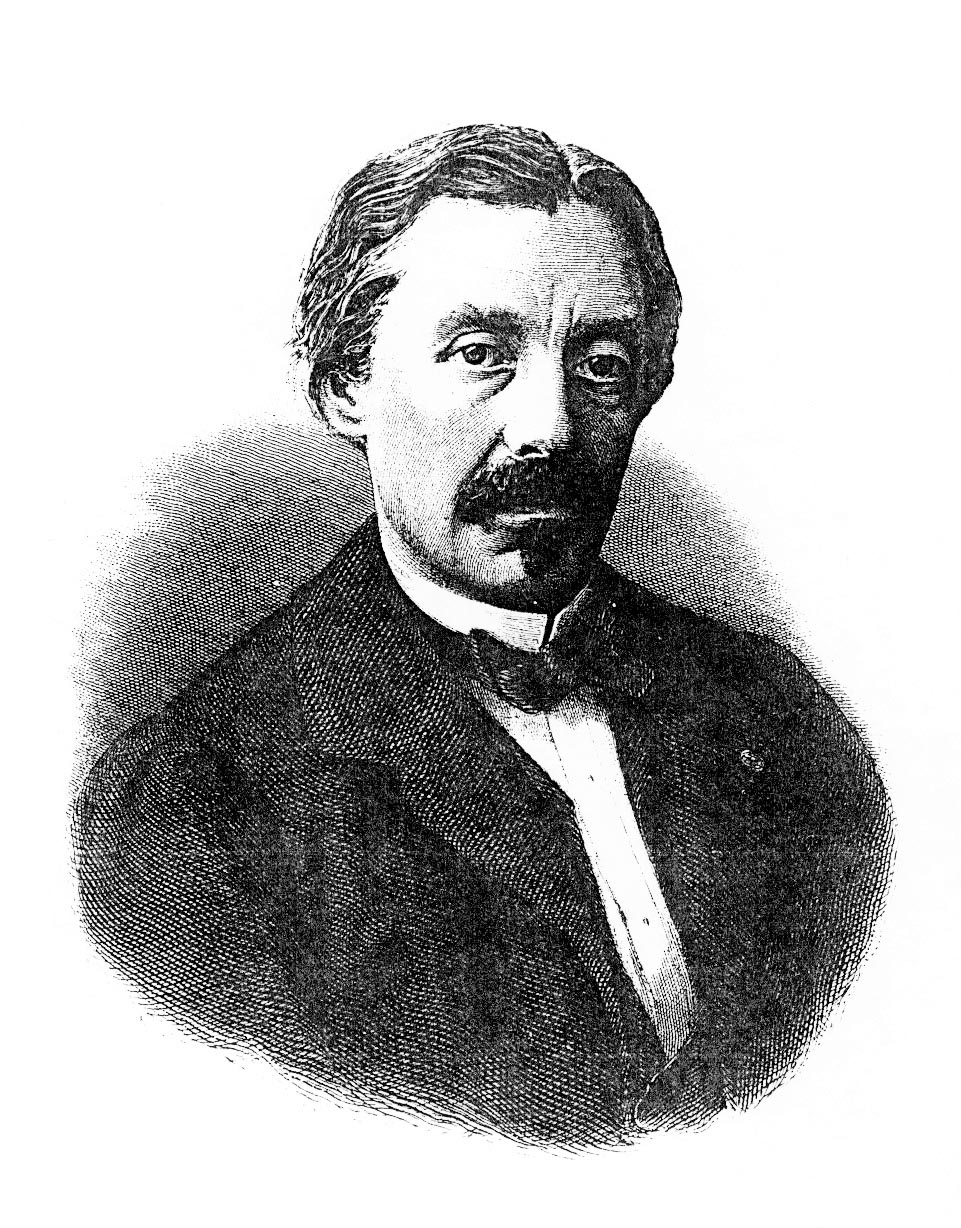- Léon Foucault
Infobox_Scientist
name = Léon Foucault| |225px
|225px
image_width = 225px
caption = Léon Foucault (1819-1868)
birth_date =September 18 1819
birth_place =Paris ,France
death_date = dda|1868|2|11|1819|9|18|
death_place =Paris ,France
residence =France
nationality = French
field =Physics
work_institution =Paris Observatory
alma_mater =
doctoral_advisor =
doctoral_students =
known_for =Foucault Pendulum
author_abbreviation_bot =
author_abbreviation_zoo =
prizes =
religion =
footnotes =Jean Bernard Léon Foucault (IPA2|ʒɑ̃ bɛʁnaʁ leɔ̃ fu'ko) (
18 September 1819 –11 February 1868 ) was a French physicist best known for the invention of theFoucault pendulum , a device demonstrating the effect of the Earth's rotation. He also made an early measurement of thespeed of light , discoverededdy current s, and although he didn't invent it, is credited with naming thegyroscope . The Foucault crater on theMoon is named after him.Early years
Foucault was the son of a publisher at
Paris , where he was born onSeptember 18 ,1819 . After an education received chiefly at home, he studied medicine, which, however, he speedily abandoned for physical science due to a fear of blood. [CathEncy|url=http://www.newadvent.org/cathen/06156c.htm|title=Jean-Bertrand-Léon Foucault] He first directed his attention to the improvement of L. J. M. Daguerre's photographic processes. For three years he was experimental assistant toAlfred Donné (1801–1878) in his course of lectures on microscopicanatomy .With A. H. L. Fizeau he carried on a series of investigations on the intensity of the
light of thesun , as compared with that ofcarbon in thearc lamp , and of lime in the flame of theoxyhydrogen blowpipe ; on the interference ofinfrared radiation , and of light rays differing greatly in lengths of path; and on the chromaticpolarization of light.Middle years
His demonstration in 1851 of the diurnal motion of the Earth by the rotation of the plane of oscillation of a freely suspended, long and heavy pendulum in
the Panthéon inParis , caused a sensation in both the learned and popular worlds, for it was the first dynamical proof of the Earth's rotation. In the following year he used (and named) thegyroscope as a conceptually simpler experimental proof. In 1855 he received theCopley Medal of theRoyal Society for his 'very remarkable experimental researches'. Earlier in the same year he was made "physicien" (physicist) at the imperial observatory at Paris.In September 1855 he discovered that the force required for the rotation of a
copper disc becomes greater when it is made to rotate with its rim between the poles of amagnet , the disc at the same time becoming heated by theeddy current or "Foucault currents" induced in the metal.In 1857, Foucault invented the polarizer which bears his name, and in the succeeding year devised a method of testing the mirror of a reflecting telescope to determine its shape. The so-called "Foucault Test" allows the worker to tell if the mirror is perfectly spherical, or if it deviates from a sphere. Prior to Foucault's invention, testing reflecting telescope mirrors was a "hit or miss" proposition. With
Charles Wheatstone ’s revolving mirror he in 1862 determined the speed of light to be 298,000 km/s (about 185,000 mi./s) —10,000 km/s less than that obtained by previous experimenters and only 0.6% off the currently accepted value.Later years
In that year, he was made a member of the
Bureau des Longitudes and an officer of theLégion d'Honneur . In 1864 he was made a member of theRoyal Society of London, and the next year a member of the mechanical section of the Institute. In 1865 his papers on a modification of Watt's governor appeared, upon which he had for some time been experimenting with a view to making its period of revolution constant, and on a new apparatus for regulating the electric light; and in the year (Compt. Rend. lxiii.) he showed how, by the deposition of a transparently thin film ofsilver on the outer side of the object glass of a telescope, the sun could be viewed without injuring the eye. His chief scientific papers are to be found in the "Comptes Rendus", 1847—1869.Death and afterwards
Foucault died of what was probably a rapidly-developing case of
multiple sclerosis [W. Tobin, The Life and Science of Léon Foucault, Cambridge University Press (2003).] onFebruary 11 ,1868 in Paris and was buried in theCimetière de Montmartre .Further reading
William Tobin, "Perfecting the Modern Reflector". Sky & Telescope, October 1987.
William Tobin, "Léon Foucault". Scientific American, July 1998.
Amir D. Aczel, "Pendulum: Léon Foucault and the Triumph of Science", Washington Square Press, 2003, ISBN 0-7434-6478-8
William Tobin, "The Life and Science of Léon Foucault: The Man who Proved the Earth Rotates". Cambridge University Press, 2003. ISBN 0-521-80855-3
External links
Collected Works:
* [http://num-scd-ulp.u-strasbg.fr:8080/513/ Volume One - "Recueil des travaux scientifiques de Léon Foucault"] 1878.
* [http://num-scd-ulp.u-strasbg.fr:8080/527/ Volume Two - "Recueil des travaux scientifiques de Léon Foucault"] 1878.Other:
* [http://www.magnet.fsu.edu/education/tutorials/java/foucaultdisk/index.html Foucault Disk - Interactive Java Tutorial] Foucault created this device showing how eddy currents work (National High Magnetic Field Laboratory)
* [http://web2.bium.univ-paris5.fr/livanc/?cote=00576&do=livre Donné & Foucault Atlas of medical micrographs] 1845References
Wikimedia Foundation. 2010.
